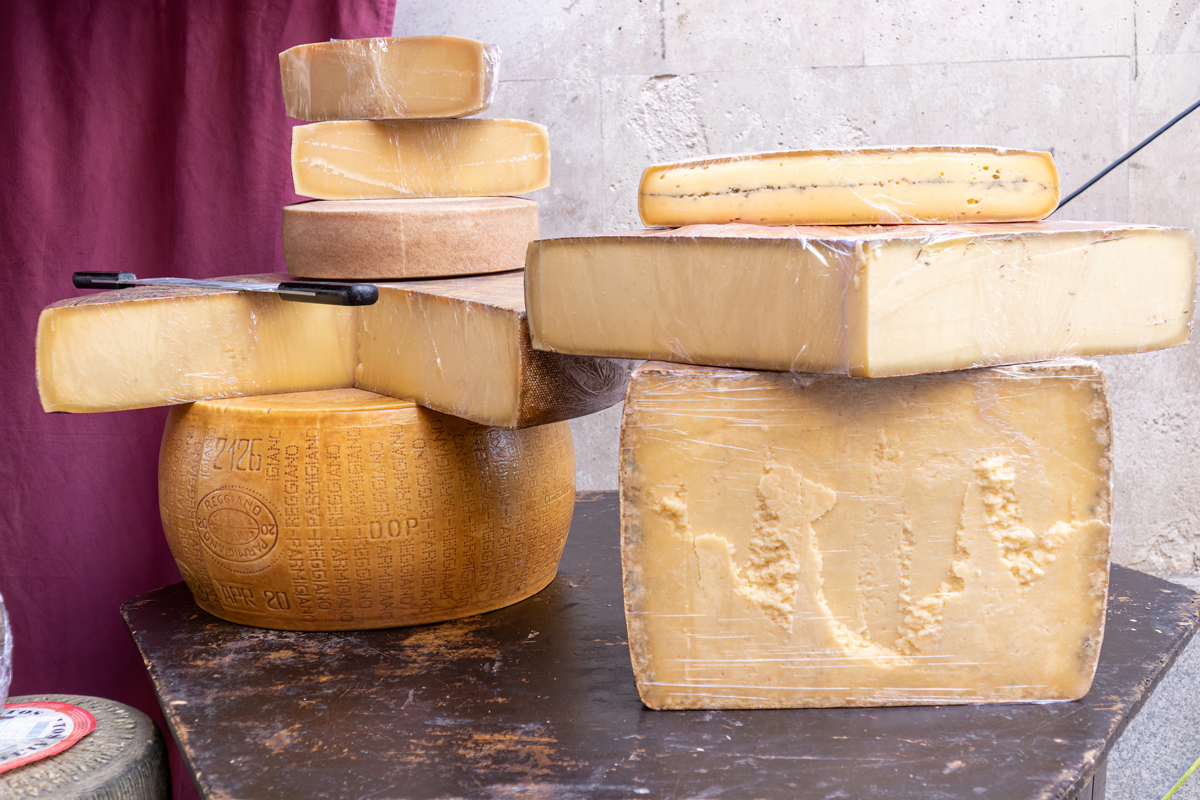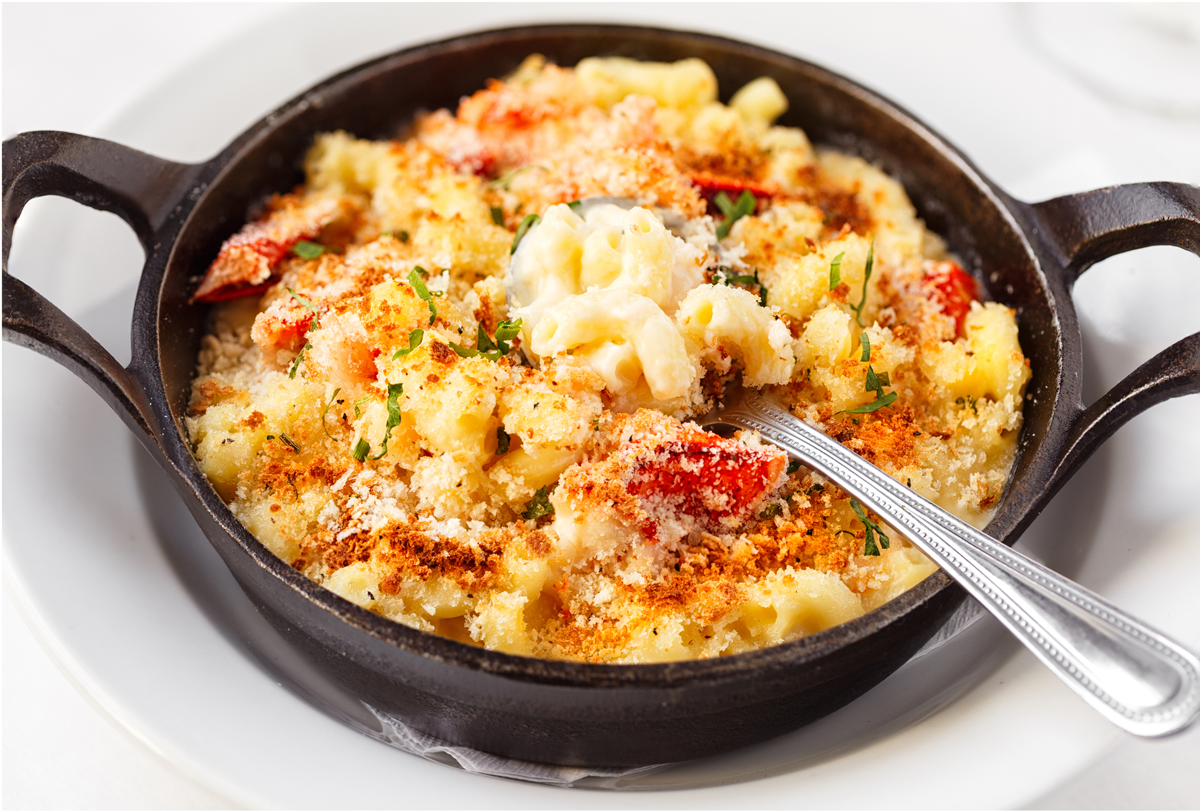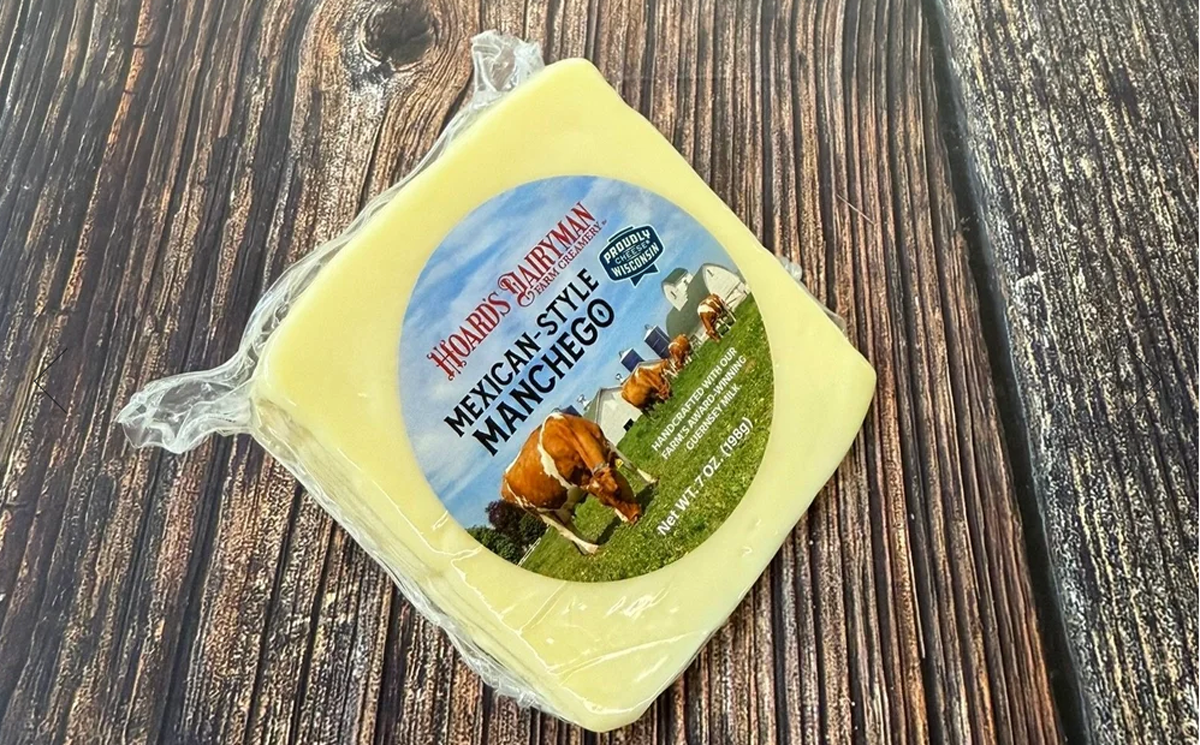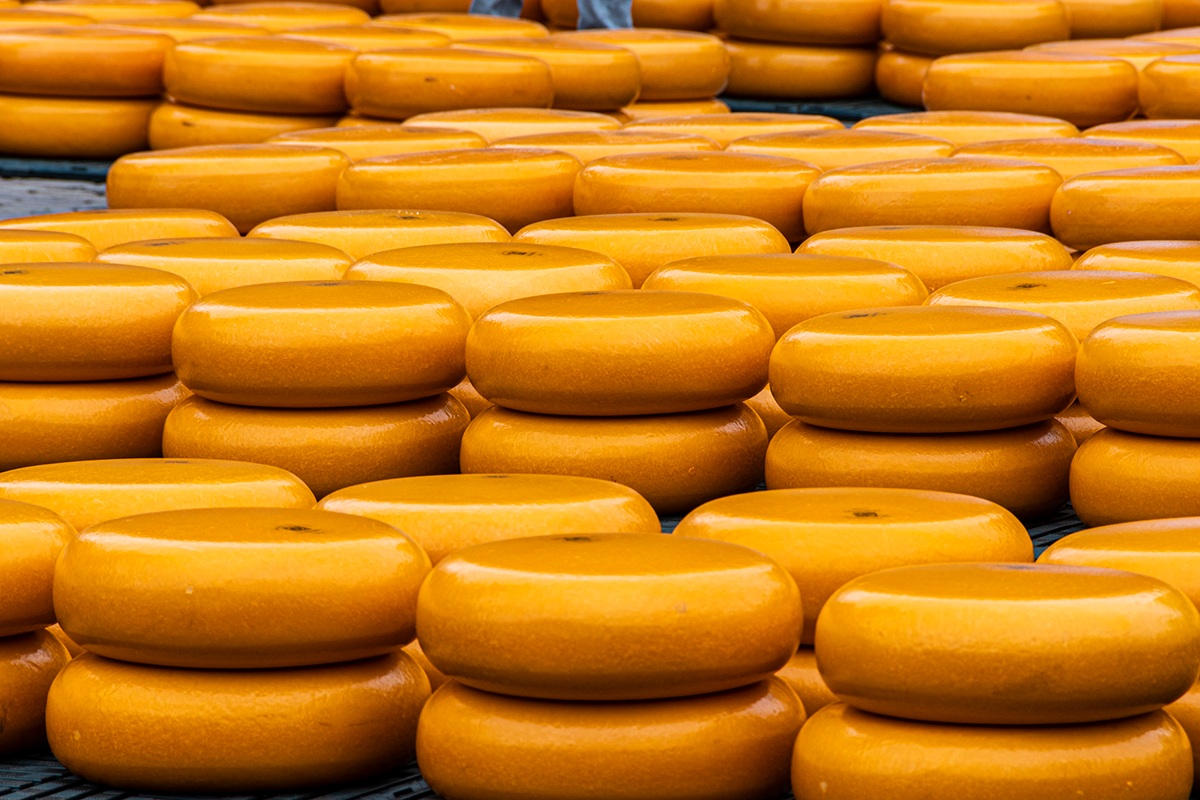Cheese treatise: 16th-century manuscript now online
Historic transcribers have completed work on a recently unearthed 1580s “pamflylt” on cheese, and the Tudor-era author’s comprehensive take on the foodstuff is gaining traction on the internet. Touted as a nutritious addition to the diet, a digestive aid, and even a wound cleaner, cheese is explored at length in the 112-page manuscript, which includes cheesemaking techniques, types of milk used in its production, and advice on when to partake — including a lively passage on whether rennet could be replaced with fish innards to both curdle the milk and satisfy religious fasting-day restrictions.
The document constitutes a for-its-time comprehensive guide; the author cites ancient Greek texts while offering contemporaneous tips and advice from “countrey folke” on matters of production and digestion. Many portions have stood the test of time: “Some do adde to the curdes the juice of herbes, as of sage and … other adde spyces to make hit more delicate to the taste.” The author also notes the geographical differences among varieties, suggesting that the difference in flavor is due to different pastures, some grasses “beinge sweete” versus regions where “the grasse doth yielde a certain unpleasantness.” Other passages, such as the one on using cheese — topically — to treat gout, have fallen by the wayside.
Food historians are studying the manuscript and even trying out some of the cheesemaking methods within. A University of Leeds press release notes that while some of the author’s scientific claims have long been debunked, other observations by the as-yet anonymous author are still circulating. In the manuscript, “there’s a lot of discussion about when you should eat cheese,” noted Alex Bamji, associate professor at Leeds University’s School of History. “Generally, the view was it was best towards the end of a meal, which a lot of us still subscribe to today.” He does caution, however, that the logic around this in the 1580s was wobbly: “Cheese doth press down the meate to the bottom of the stomake, it says, where the digestion is best.”
The manuscript, which is now part of the Leeds University collection, can be viewed at https://explore.library.leeds.ac.uk/special-collections-explore/750167
Melting magic: Tips for incorporating cheese in your favorite fall dishes
It’s the time of year for cozy living: curling up in a snug blanket on the sofa, watching the candles flicker on the walls, and enjoying a dish that’s rich, tasty, comforting — and warm. (A charcuterie board or stacked-to-the-ceiling club sandwich just isn’t going to cut it when the thermometer falls.) Cheesy, creamy dishes like mac and cheese are what’s called for here, with the key word being creamy. But if you’ve ever been stumped in your home kitchen as to how restaurants achieve that melty — not stringy or separated — texture, know that it’s not just you. There’s a secret (several, actually) to making a perfect melted cheese dish. Try one of these pro tips and gather the family around the table:
Old-school roux. Making a roux is the classic cheese sauce method; it takes some patience but will yield that velvety texture you’re craving. Mix equal parts butter and flour in a saucepan over low heat. Whisk until the butter is melted and the flour incorporate and stir until it starts to lose that sandy look and texture. Slowly stir in milk, letting it heat gradually, and add freshly grated cheese. The sauce will pour easily and stay creamy longer than plain melted cheese. (Find detailed recipes online or in your mom’s old print cookbooks under “white sauce.”)
Melter’s little helper. Sodium citrate doesn’t sound too tasty, but a small amount of this emulsifier in your cheese dish will do the trick. It keeps the fat, protein, and moisture in the cheese from separating. You can find it in specialty food stores and online.
Cheese choices. Some cheese melts better than others; look for varieties that have high moisture and fat content. And don’t be afraid to mix it up — some of the most memorable dishes emerge from humble “what’s in the fridge” beginnings. If you’re in the midst of menu planning, try these melt-friendly options from Hoard’s Dairyman Creamery Farm: Havarti (classic Island or Fuego); Gouda; and Mexican Style Manchego.
Quiz Time ! ! !
What nation consumes the most cheese per capita?
a. The United States
b. France
c. Italy
d. Switzerland
The correct answer is: d. Switzerland
Cheese feature of the week: MEXICAN STYLE MANCHEGO
It’s the rich Guernsey milk that gives Hoard’s Dairyman Farm Creamery’s Manchego-style cheese a uniquely American flavor. A semi-firm cheese that originated in the La Mancha region of Spain, our Manchego is a delightful collection of buttery, nutty, tart, and sweet flavor notes. It melts on the palate and lends itself to grating, melting, or slicing with soups, sauces, pasta, sandwiches or salads. Pairs well with a robus red wine or sherry. Purchase here.
Apples, autumn, and cheese: name a more iconic trio
It’s apple time and whether you’re picking your specimens at the grocery store or the orchard, we know it’s tempting to bring home more than you actually need for the recipes you’ve got in mind. Instead of using all those apples for desserts, set some aside for this savory treat, made with Hoard’s Dairyman Farm Creamery’s Gouda — whether you prepare it on the grill or in the oven, the fennel and apples marry beautifully with the creamy, rich cheese. It just might become a family fall favorite!
Hoards Dairymen Gouda flatbread with grilled apples and fennel
Ingredients:
One wedge of Hoards Dairymen Gouda shredded (6 oz)
1 par-baked flatbread (we used Naan flatbread)
1 bulb of fennel, sliced
1 firm green apple (we used Granny Smith) cored, cut in half, and sliced
1 tablespoon melted butter
Instructions:
Grill the apple and fennel slices until caramelized in a griddle pan or an indoor or outdoor grill; set aside.
If you use an outdoor grill, you can finish the flatbread on the grill with the below steps; otherwise continue with a 400-degree oven.
Brush the parbaked crust with the melted butter. Top with grilled apples and fennel. Top with shredded Hoard’s Dairyman Farm Creamery Gouda cheese. Return to either the closed grill or the oven until the cheese is melted. Sprinkle with salt and pepper if desired.
Daring dairy: The World War II rescue of Alderney Island’s cows
Today’s American-bred Guernsey dairy cows trace their lineage to the small British Channel Island they’re named after. And just like their Jersey Island cousins, this breed has a long and storied past. Guernseys were legendary for their golden-hued, rich, and creamy milk, an ingredient still coveted by cheesemakers. But hidden in the margins of Channel Islands dairyhistory is a lesser-known chapter: the tale of the Alderney cow — a breed that escaped the Nazis,only to vanish for good not long after.
In the early days of dairying on the Channel Islands, “Alderney” was the catch-all group name for the archipelago’s cows. The name came from Alderney, the northernmost inhabited Channel Island. Over time, the Guernsey and Jersey emerged as distinct types and eventually dominated the island dairy scene. But the Alderney still had its champions, folks who insisted it was a breed unto its own, distinct from Guernsey and Jersey.
That belief was strong enough to prompt a rescue of Alderney herds from their eponymous island after the World War II evacuation of the island. With the German Army close at hand, agroup of about thirty men decided “an effort should be made to rescue Alderney’s famous cattle,” according to the account one rescuer gave to the Rochdale Observer in 1941. With only three “small pleasure boats” among them, the men managed to take about 500 head to Guernsey. Afterward, they returned to Alderney and continued to salvage supplies from the now-deserted isle — until a harbor scout spotted German bombs splashing around their boats.
But that heroic evacuation turned out to be the beginning of the end for the Alderney cattle; they were reportedly absorbed into the Guernsey Island’s herds. Still, Alderney residents were determined to revive their dairy darling by searching out any survivors. By now, islanders were used to skepticism about whether their cows constituted a unique breed; one told the Daily Telegraph in 1944, “We of Alderney are desperately keen about the matter.” But not everyone was convinced. A short piece The Guardian, cheekily titled “The non-existent cow,” dismissed the whole idea of a unique Alderney breed. “There never was such a creature,” it claimed. The truth may be lost to time, but for a moment, in the shadow of war, a small band of men believed it was worth saving.
Guernseys, of course, continue to thrive in Great Britain and across the pond, including at Hoard’s Dairyman Farm, home to the oldest continually registered Guernsey herd in the country. Check out their line of exceptional cheeses and experience a piece of history.
Cheese feature of the week: Havarti Fuego
This milky, creamy cheese offers a light and mild flavor, with a semi-firm, smooth texture. It features delicate buttery notes that perfectly balance the slight tanginess and a spicy kick from the mix of habanero and jalapeño peppers. It’s great for melting or slicing, and can be used in a variety of dishes.
This cheese pairs wonderfully with fruits, cured meats, dark chocolate, or tortilla chips. The ideal pairings include a crisp Sauvignon Blanc, a refreshing Pilsner, or a Pale Ale. For a contrasting option, try it with a delicate Rosé or a bubbly Prosecco.
Purchase on our online store here, or you can find Havarti Fuego at the World Dairy Expo, September 30 – October 3 at Booth #4327. See you there!
What makes the holes in Havarti cheese?
a. Oxygen
b. Carbon dioxide
c. Water
d. Whey
If you guessed b. Carbon dioxide, you are correct!
Bound for black market? Cheese theft arrests expose plot
Authorities in England have arrested six men since last October as they investigate the theft of artisanal Cheddar cheese valued at more than $405,000. Staff at Neal’s Yard Dairy, an upmarket cheese seller and wholesaler, were the unwitting participants in a scam that yielded the thieves roughly 48,000 pounds of Cheddar that came from artisan suppliers throughout England and Wales. The 950 wheels were delivered to an individual who had convinced Neals Yard Dairy staff that he worked for a French retailer as a wholesale distributor. The arrests soon followed, starting with a 63-year-old man who was taken into custody on suspicion of fraud by false representation, as well as handling stolen goods. Scotland Yard’s investigation of the case went quiet for months, but in mid-August, authorities announced they’d nabbed five more men. London’s Metropolitan Police continue to build their cases against the alleged thieves.
The case is hardly one of a kind; the BBC reported that luxury and artisan cheeses have been continued targets for black market purveyors. Organized crime rings are attracted to food theft because it generally carries less risk than, say, illegal drug smuggling. Finding a market for the cheese may be easier these days: with sanctions tightened on Russia, there’s speculation that food from Western nations might appear on the black market there. But while the “Grate Cheddar Heist,” as celebrity chef Jamie Oliver dubbed it, is not a one-off crime, many of the cheeses targeted are unique. Cheddar, which originated in England, is a favorite variety for artisan cheesemakers to put their own spin on. It’s also the best-selling cheese in the United Kingdom and ranks near the top for the U.S. as well — which means you don’t need access to the black market to find a Cheddar that’s worth its weight in flavor, texture, and versatility.
Fill it and grill it: quick weeknight dinners
Quick — what’s filling, delicious, and … quick? This time of year, we’re all looking for dinner solutions that are easy to prepare but don’t taste like you cut corners. Even better? A meal plan that you can customize to each family member’s tastes. The simple grilled cheese, elevated with quality ingredients and imaginative combos, fits the bill. Use good breads, cheese, fruit, and an optional meat to build to expand your horizons beyond basic with these flavorful fusions:
I’ll Have a Blue Crispness: Multigrain bread, blueberry preserves, Camembert or Brie, and a slice of prosciutto. The sweet-salty juxtaposition of the fruit and meat are set off by the creamy, rich cheese and the crisp, nutty texture of the bread. (You can lean into the fruitiness by grilling this one in olive oil instead of butter.)
Too Gouda to be True: Sourdough, Gouda, tart apple slices, and turkey bacon. If your Gouda is great, then you can be confident that subbing out regular bacon for the lower-fat turkey version will fly under the radar. Granny Smith apples add a welcome touch of acidic crunch, and the tang of the sourdough’s punctuates the Gouda’s buttery contribution. (Speaking of butter, stick with that for cooking this sandwich; it’s a classic.)
For the Dill of it: A light rye bread, Harvarti, smoked salmon and a sprinkling of fresh, finely chopped dill. This combination will celebrate Havarti cheese’s Scandinavian roots with traditional ingredients that are a natural fit. But for an even more integrated taste sensation (and one fewer ingredient to prep), try Hoard’s Dairyman Farm Creamery’s Island Havarti Dill; our cheesemakers incorporate dill fronds right into the process. (Prep tip: Butter is better for pan-grilling this sandwich.)
Check out all of Hoard’s Dairyman Farm Creamery cheese offerings; you just might discover you have grilled cheese aspirations — and inspirations — of your own!










